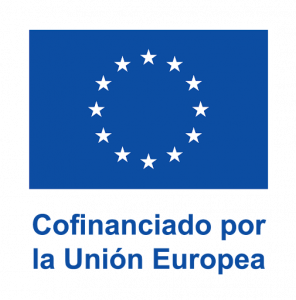VIPROSS
VItrimetric matrices for mitigating PROcess-induced Stresses in Sustainable composite components

Period: 09/2024 – 09/2027 (36 months)
Principal Investigators of AMADE:
Laura Carreras Blasco laura.carreras@udg.edu (IP1)
Daniel Sánchez Rodríguez daniel.sanchez@udg.edu (IP2)
Other AMADE researchers involved in the project: Sihem Zaidi, Jesé Chávez
Grant agreement number: PID2023-149840OA-I00
Funded by: «Agencia Estatal de Investigación” (AEI), “Ministerio de Ciencia e Innovación” (MCIN) and confunded by the European Union under reference PID2023-149840OA-I00


Residual stresses in composites can diminish strength, shorten service life, and induce premature cracking. Unintended deformation following demolding is another adverse consequence as it hinders precise dimensional tolerances. Vitrimers are a new type of resins that have emerged as a sustainable alternative to thermosets, aiming to address their lack of recyclability. Although vitrimers are covalently cross-linked as thermosets, they have the capability to undergo reversible changes in their molecular structure under external stimulus. This feature grants the vitrimeric materials the ability to self-heal, and be reshaped and reprocessed multiple times without a significant loss of material properties. Due to its potential sustainability, the composites community is increasingly focusing on vitrimers, mainly to their self-healing ability. However, attention is not yet being paid to minimize process-induced residual stresses. Here is where VIPROSS aims to make significant progresses. The fundamental premise of VIPROSS is that the characteristic exchange reaction in vitrimers, enabling them to flow, permits avoiding residual stresses linked to curing shrinkage in composite components, if processing conditions are smartly tailored. This will mitigate the negative effects of residual stresses on the structural performance, reduce undesired deformations, and alleviate the strategies implemented in industry to address these issues. The project consists of four blocks, which represent the main scientific or technical contributions to the existing knowledge: i) A comprehensive investigation of the mechanisms governing stress evolution in vitrimeric laminates, differentiating them from thermosetting counterparts. Thermo-mechanical characterization will be performed using various thermal analysis methods. ii) Tools will be developed to define optimal processing conditions for vitrimeric composite components. The project will analyze how the use of vitrimeric matrices can alleviate, or even replace the strategies used in the industry to reduce undesired stresses and deformations in thermosetting composite components. Optimal processing conditions will be defined that promote stress relaxation in vitrimers, thus, leading to optimal component quality (fully cured, non-thermally degraded, free of residual stresses linked to curing, and improved apparent mechanical properties and geometric tolerances). The processing conditions will also account for energy and cost efficiency (one-stage, high temperature and short duration cycles). iii) Experimental evidence will be provided to showcase vitrimers as a solution for avoiding stresses and strains linked to curing shrinkage. The adverse effects of residual stresses on composites, such as matrix cracking and delamination, will be addressed. The methodology involves in-situ strain monitoring, mechanical tests, and measurements of geometric distortions, along with inspection of damage events through X-ray computed laminography. iv) Finally, lessons learned from the project will be extracted, and technical criteria and guidelines will be established for the optimal processing of vitrimeric composite parts. This compilation of scientific and technical insights aims to facilitate the broader adoption of vitrimers in industry, providing guidance on properties, applications, and manufacturing processes for advanced composite laminates with enhanced mechanical performance and precise geometric tolerances.